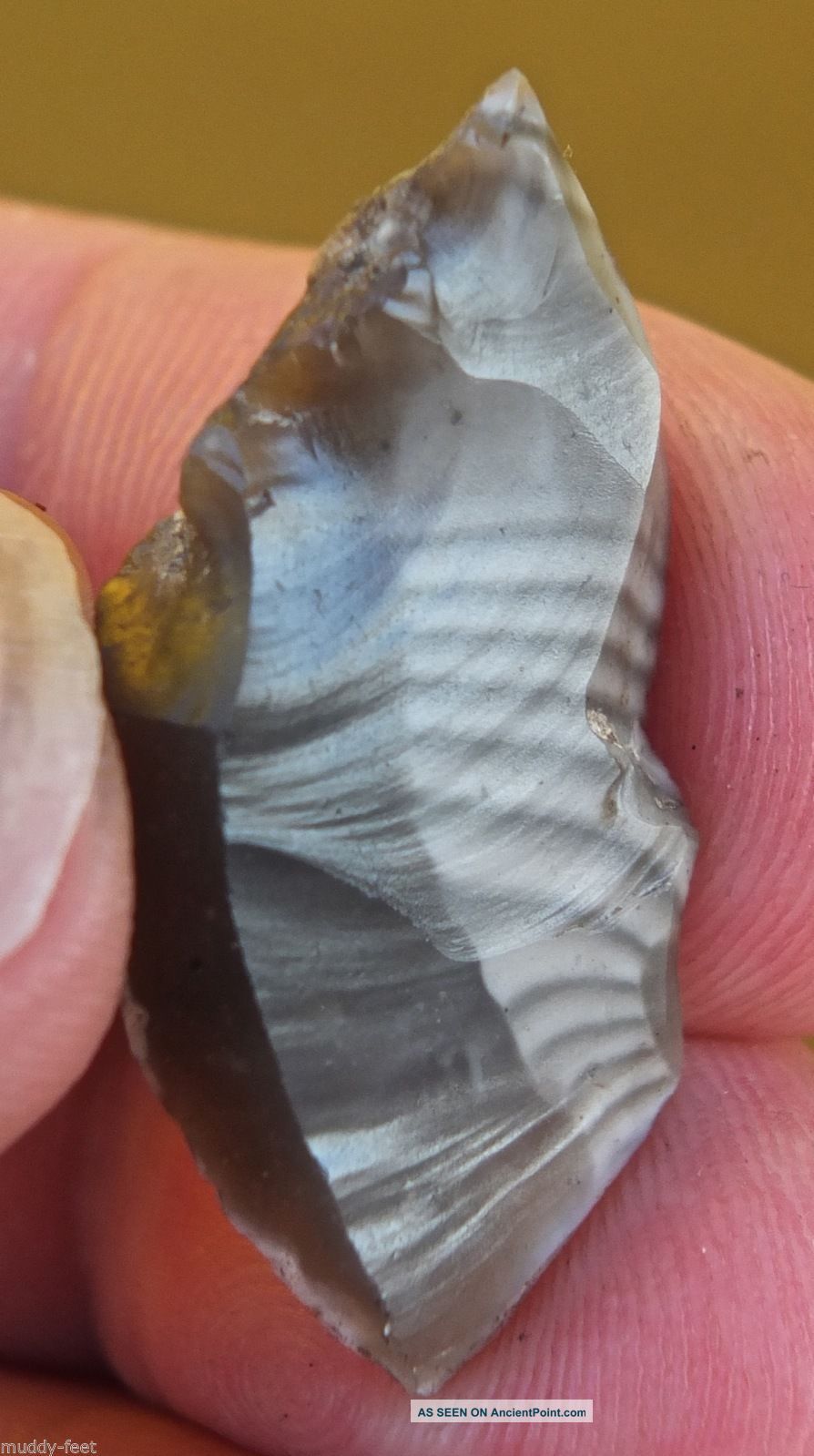|
|
| Line 17: |
Line 17: |
| | Images: http://ancientpoint.com/inf/133387-eup_aurignacian_burin_on_a_microlithic_flint_flake__from_kent_k91.html | | Images: http://ancientpoint.com/inf/133387-eup_aurignacian_burin_on_a_microlithic_flint_flake__from_kent_k91.html |
| | | | |
| − |
| + | Anna Paradise |
| − | | + | |
| − | | + | |
| − | | + | |
| − | | + | |
| − | | + | |
| − | | + | |
| − | | + | |
| − | | + | |
| − | | + | |
| − | | + | |
| − | | + | |
| − | | + | |
| − | | + | |
| − | | + | |
| − | | + | |
| − | | + | |
| − | | + | |
| − | | + | |
| − | | + | |
| − | | + | |
| − | | + | |
| − | | + | |
| − | Short Answer: a steel tool used for engraving into antler and bones, made of flint
| + | |
| − | | + | |
| − | Long Answer: Burins, tiny points used to engrave antler and bones that were made of flint, were a major advancement in the development of technology in the upper paleolithic era. This new tool, created by the ''Aurignacians'', was common throughout the Upper Paleolithic, about 35,000 - 10,000 years ago, and are considered Magdalenian, but were found as early as the Olduvai Gorge period. The burin not only was a step in the right direction in the development of tools, but also led to the creation of another important discovery; the bone needle. Mainly, this tool was used to gouge bone and antler, so that then the bone could be split out. The blanks then had an eye drilled into them, and were then sharpened to the right sharpness. This allowed fitted clothing for protection from the common cold temperatures to be made. The cross-section of the blade created a platform for the tool with a very sharp and thin but strong point. The angle of the snapped-off portion of the blade reinforced the tool in order to engrave and gouge the tough materials such as bone and antler. Once these tools split the bones, they were used to create everyday items such as needles, fish hooks, harpoon and spear tips and jewelry. Overall, through the development of burins, many of the past contraptions were created which led to the new technological advances of our lives today.
| + | |
| − | | + | |
| − | http://www.arrowheadology.com/forums/attachments/arrowheads-indian-artifacts/5495d1256445550-burin-flaking-bazaar_arrowheads-036.jpg
| + | |
| − | | + | |
| − | Sources:
| + | |
| − | ''Origins Manual'' pgs. 45-46
| + | |
| − | http://www.merriam-webster.com/dictionary/burin
| + | |
| − | http://www.anth.ucsb.edu/faculty/stsmith/classes/anth3/courseware/LithicTech/9_Upper_Paleolithic_Tool.html
| + | |
| − | http://www.britishmuseum.org/explore/highlights/highlight_objects/pe_prb/f/flint_burins.aspx
| + | |
Latest revision as of 08:28, 10 November 2015
According to Merriam-Webster dictionary, burins are prehistoric flint tools with a beveled point. A hominid species preceding homo Sapiens named Aurignacians were a very large turning point in the advancement of stone tools, known for inventing the burin. A burin is a tool used for engraving antlers and other kinds of bones, containing a tiny point that allowed for more detailed work. This tool consists of a metal rod angled down in a diagonal line and flat handle with a rounded end so that the fingers of your hand can easily grasp and hold it. How the engravings that the burin produces are shaped and proportioned depend on the angle of the burin's tip.

Sources:
Origins Manuel pgs. 56 and 57
http://www.britannica.com/topic/Aurignacian-culture
http://www.britannica.com/topic/burin
http://www.merriam-webster.com/dictionary/burin
Images: http://ancientpoint.com/inf/133387-eup_aurignacian_burin_on_a_microlithic_flint_flake__from_kent_k91.html
Anna Paradise
